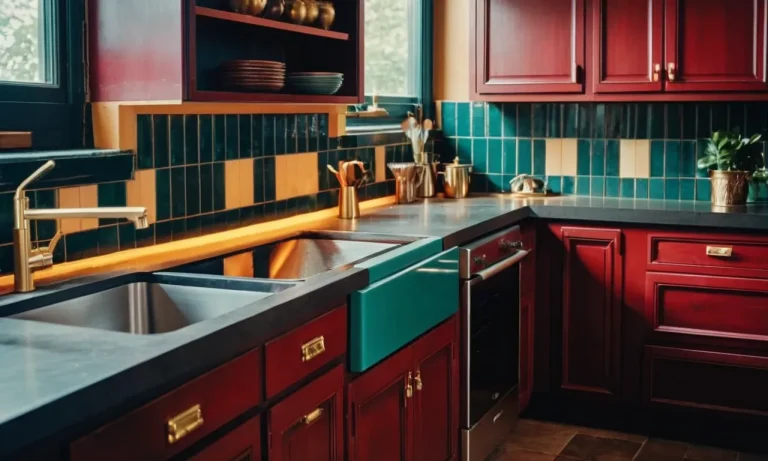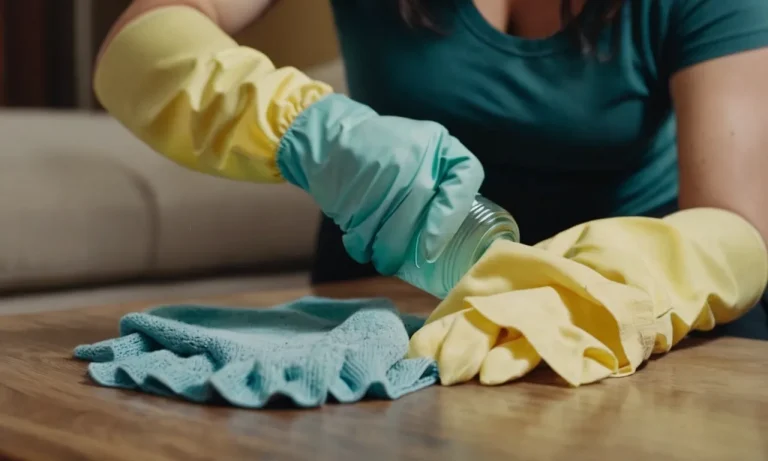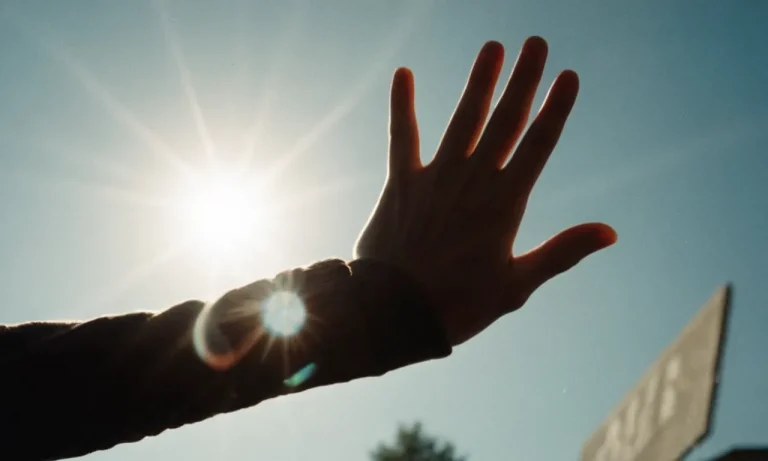Does Paint Dry Faster In Heat Or Cold?
If you’ve ever found yourself waiting impatiently for a fresh coat of paint to dry, you may have wondered if you could speed up the drying process. The effects of temperature on paint drying time are more complex than you might think.
Read on as we break down the science behind how heat and cold impact paint drying.
If you’re short on time, here’s a quick answer to your question: Paint dries faster at higher temperatures because the solvents in the paint evaporate more quickly. However, extremely high temperatures can cause issues like bubbling or cracking. The ideal drying temperature is between 65°F and 85°F.
How Temperature Impacts Paint Drying
Temperature plays a crucial role in the drying process of paint. The rate at which paint dries is influenced by the temperature of the environment in which it is applied. Understanding how temperature impacts paint drying can help you achieve the best results for your painting projects.
Evaporation of Solvents
When paint is applied, it contains solvents that need to evaporate for the paint to dry. Higher temperatures accelerate the evaporation process, causing the solvents to evaporate more quickly. This leads to faster drying times in warmer environments.
On the other hand, colder temperatures slow down the evaporation process, prolonging the drying time of the paint. Therefore, paint tends to dry faster in heat compared to cold.
Ideal Drying Temperature Range
While heat can speed up the drying process, it is important to note that extreme temperatures can have adverse effects on the quality of the paint job. The ideal temperature range for paint drying is typically between 50°F (10°C) and 85°F (29°C).
Within this temperature range, the paint will dry evenly and the colors will set properly. If the temperature falls below 50°F (10°C), the paint may take longer to dry, and if it exceeds 85°F (29°C), the paint may dry too quickly, leading to issues such as cracking or blistering.
According to a study conducted by the Paint Quality Institute, temperatures around 70°F (21°C) provide the best conditions for optimal paint drying.
Issues with Extreme Temperatures
Extreme temperatures can pose challenges when it comes to paint drying. In very cold temperatures, the paint may freeze before it has a chance to dry, resulting in an uneven and compromised finish. Conversely, in extremely hot temperatures, the paint may dry too quickly, leading to issues like brush marks or an uneven surface.
It is worth noting that different types of paint may have specific temperature requirements, so it is always advisable to refer to the manufacturer’s instructions for the optimal drying conditions. Additionally, factors such as humidity and air circulation can also impact the drying process, so it is important to consider these variables as well.
Does Paint Dry Faster in Heat or Cold?
Paint drying time can be influenced by various factors, including temperature. Whether heat or cold speeds up or slows down the drying process depends on several factors.
Heat Speeds Up Drying
Generally, higher temperatures can accelerate the drying time of paint. When exposed to heat, paint molecules gain energy and move more quickly, allowing the solvent to evaporate faster. As a result, the paint forms a dry and solid surface more rapidly.
In warmer weather, paint applied to a surface can dry to the touch within a couple of hours, depending on the type of paint and the thickness of the application.
According to Sherwin-Williams, a leading paint manufacturer, most latex and oil-based paints dry faster in temperatures above 50°F (10°C). Heat can be particularly beneficial when painting large surfaces or in projects that require quick completion.
The Downsides of High Heat
While heat can expedite the drying process, it is important to consider the potential downsides. Extremely high temperatures can cause the paint to dry too quickly, leading to issues such as poor adhesion and an uneven finish.
Additionally, rapid drying can result in the formation of bubbles or blisters on the painted surface. To avoid these problems, it is crucial to follow the manufacturer’s instructions regarding temperature ranges for optimal drying.
Moreover, painting in high heat can be challenging for the painter as well. The excessive heat can cause the paint to thicken, making it more difficult to work with and potentially compromising the overall quality of the paint job.
Cold Temperatures Slow Drying
Cold temperatures have the opposite effect on paint drying. When exposed to cold air, paint molecules lose energy and move slower, hindering the solvent evaporation process. As a result, the paint takes longer to dry and cure.
In very cold temperatures, paint can take several hours or even days to dry completely.
According to Benjamin Moore, a renowned paint company, most latex and oil-based paints have a minimum recommended temperature range for drying, typically above 35°F (2°C). Painting in colder temperatures can lead to extended drying times, potential adhesion issues, and an increased risk of moisture damage to the paint film.
It’s important to note that extreme temperatures, whether hot or cold, can affect the overall quality and longevity of the paint job. It is generally recommended to paint within the recommended temperature range specified by the paint manufacturer for optimal results.
Tips for Drying Paint Faster
Raise the Temperature Gradually
One way to speed up the drying process of paint is to raise the temperature in the room gradually. This can be done by turning up the thermostat or using a space heater. However, it’s important not to increase the temperature too quickly, as it can cause the paint to dry unevenly or even crack.
A gradual increase in temperature allows the paint to dry evenly, resulting in a smooth and professional finish.
Use Air Circulation
Air circulation plays a crucial role in drying paint faster. By using fans or opening windows, you can increase the airflow in the room, which helps to evaporate the moisture in the paint. This not only speeds up the drying process but also prevents the paint from becoming sticky or developing a tacky surface.
Keep in mind that using too much airflow can cause dust or debris to settle on the wet paint, so it’s important to strike a balance.
Choose Quick-Dry Paints
If you’re looking for a paint that dries quickly, consider choosing a quick-dry or fast-drying paint formula. These types of paints are specifically designed to dry faster than traditional paint varieties.
They contain additives that accelerate the drying process, allowing you to finish your painting project in less time. Quick-dry paints are available for various applications, including walls, furniture, and even art projects.
Use Thinner Coats of Paint
Applying thinner coats of paint can significantly reduce drying time. Thick paint layers take longer to dry because the outer surface dries first, while the inner layers are still wet. By applying thinner coats, the paint dries more evenly and quickly.
Additionally, thin coats of paint are less likely to drip or sag, resulting in a smoother and more professional-looking finish. It’s important to follow the manufacturer’s recommendations regarding the number of coats needed for proper coverage.
By following these tips, you can speed up the drying process of paint, allowing you to complete your painting projects faster and with excellent results. Remember to always read and follow the instructions provided by the paint manufacturer for the best outcome.
When to Call a Professional
While many home improvement projects can be done by homeowners themselves, there are certain situations where it is best to call a professional. Here are some instances when it is recommended to hire a professional:
1. Electrical Work
Electrical work can be dangerous if not done correctly. It is always best to hire a licensed electrician to handle any electrical repairs or installations. They have the knowledge and expertise to ensure that the work is done safely and up to code.
2. Plumbing Issues
Plumbing problems, such as leaks or clogged drains, can cause significant damage if not addressed properly. Hiring a professional plumber ensures that the issue is fixed correctly the first time and helps prevent any further damage to your home.
3. Structural Repairs
If you notice any signs of structural damage to your home, such as cracks in the foundation or sagging floors, it is essential to call a professional contractor. They have the expertise to assess the extent of the damage and provide the necessary repairs to ensure the safety and stability of your home.
4. Roofing Repairs
Repairing or replacing a roof is a complex task that requires specialized knowledge and equipment. It is best to leave this job to professional roofers who have the experience and expertise to handle the job safely and effectively.
5. Major Renovations
For major home renovations, such as adding an extension or remodeling a kitchen, it is advisable to hire a professional contractor. They have the skills and experience to manage the project efficiently and ensure that all aspects of the renovation are done correctly.
Remember, when it comes to your home’s safety and structural integrity, it is always better to be safe than sorry. Hiring a professional for certain home improvement tasks can save you time, money, and potential headaches in the long run.
Conclusion
While it’s tempting to turn up the heat to speed up paint drying time, drastic temperature changes can actually ruin a paint job. For the best results, keep the room temperature between 65-85°F, use fans to circulate air, choose quick-dry paint, and apply thin coats.
With some planning and patience, you can achieve the perfect paint finish.







